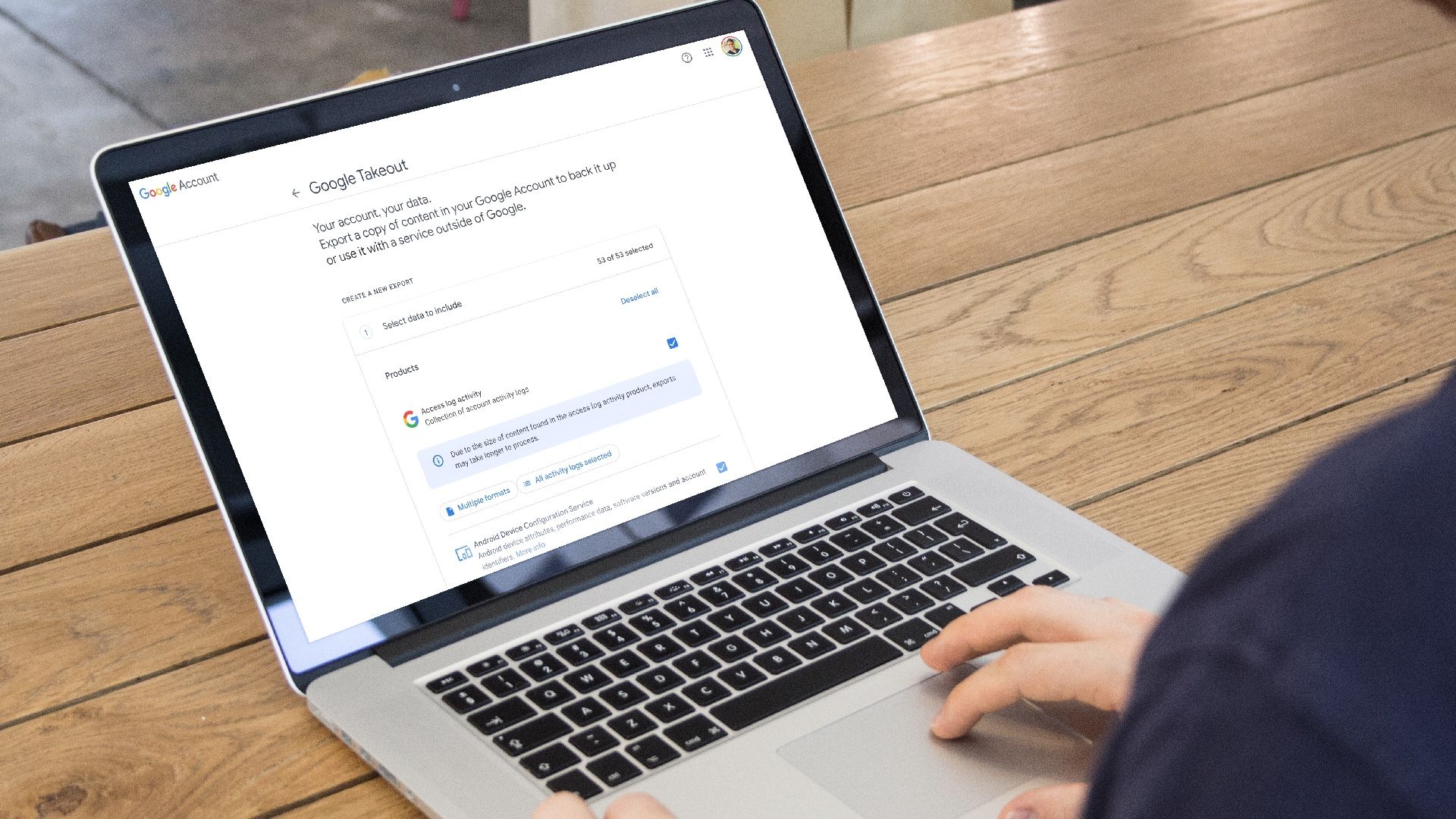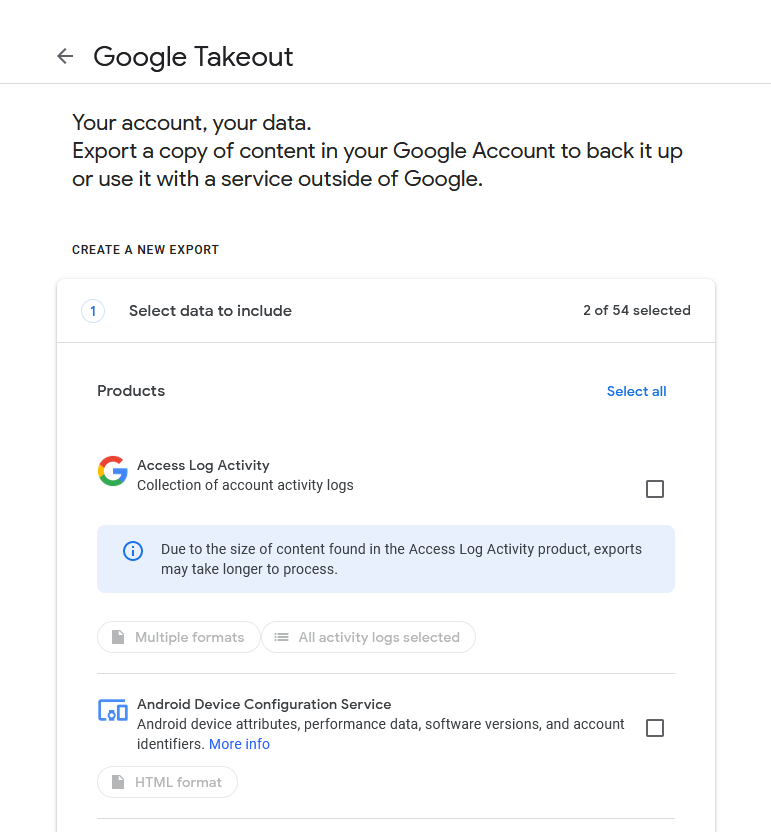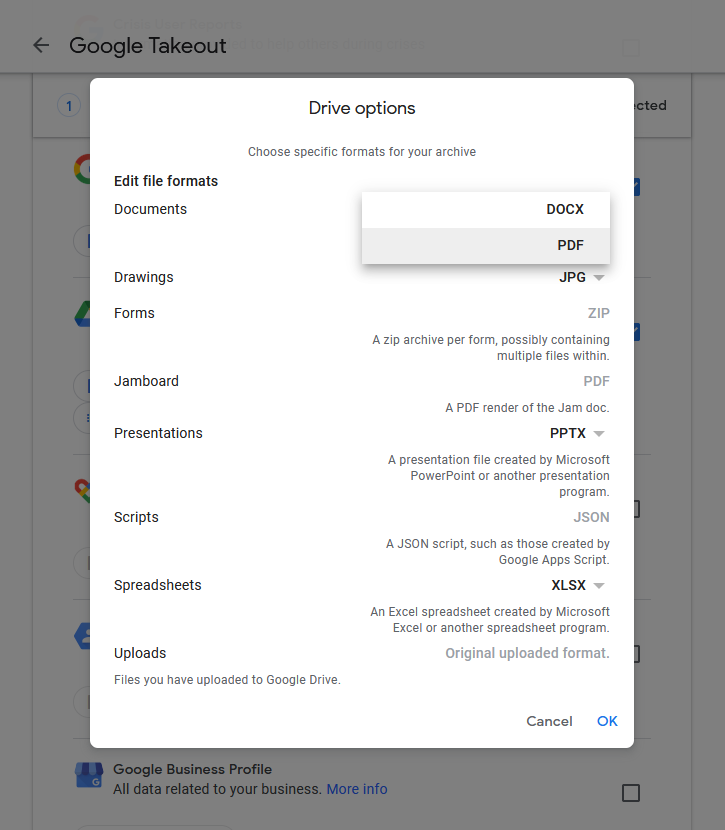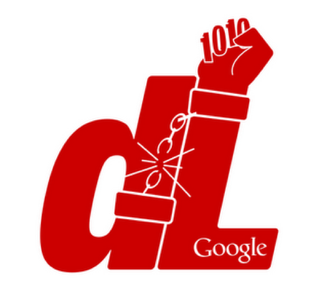When you create a Google account and use it across devices, the software giant collects all types of data. It includes your search history, health data, YouTube activities, payment methods, favorite books, emails, location, and the top smart home devices connected to your Google account. Google Takeout offers the flexibility to take control of your data and download it to your local storage.
You may have heard of this useful tool if you work for a business, organization, or educational institution. It's commonly used to transfer an employee's data to another Google account when they leave the company. Students also use it when they complete their term in an institution or a university and want to download data from their existing Google ID. It's also a quick way to download data from Google Drive for local storage redundancy or to free up Drive space by archiving old files.
Google Takeout is a web-based service. It's available on all platforms, including Windows, Mac, ChromeOS, and Linux.
Why use Google Takeout?
Google Takeout isn't limited to large organizations, educational institutes, or paid Google One subscribers. The handy export tool is available for all. Google provides so many cheap or free services that you likely have some data on at least one of their platforms. Here are some of the reasons to give Google Takeout a try:
- Export all your Google Photos media files to an external drive or local storage.
- Create an offline backup of your Google account and avoid data loss during a ransomware attack.
- Transfer your Chrome bookmarks, Google contacts, Google calendar events, and other relevant data to rival services like Dropbox, OneDrive cloud storage, Outlook, and more.
- Migrate your data to a new account. Maybe you want to consolidate everything into a single account or switch to a business account, or perhaps it's time to retire that cringe email address you've had since high school.
- Export data and move to another service for privacy reasons.
These aren't the only reasons to use Google Takeout. There are alternatives for almost every Google product, and maybe you decided to switch to another platform. Some products you might transfer data to could be a new task list app to replace Google Tasks, a new shopping list app for your grocery trips, or one of the many alternatives to Gmail for your email.
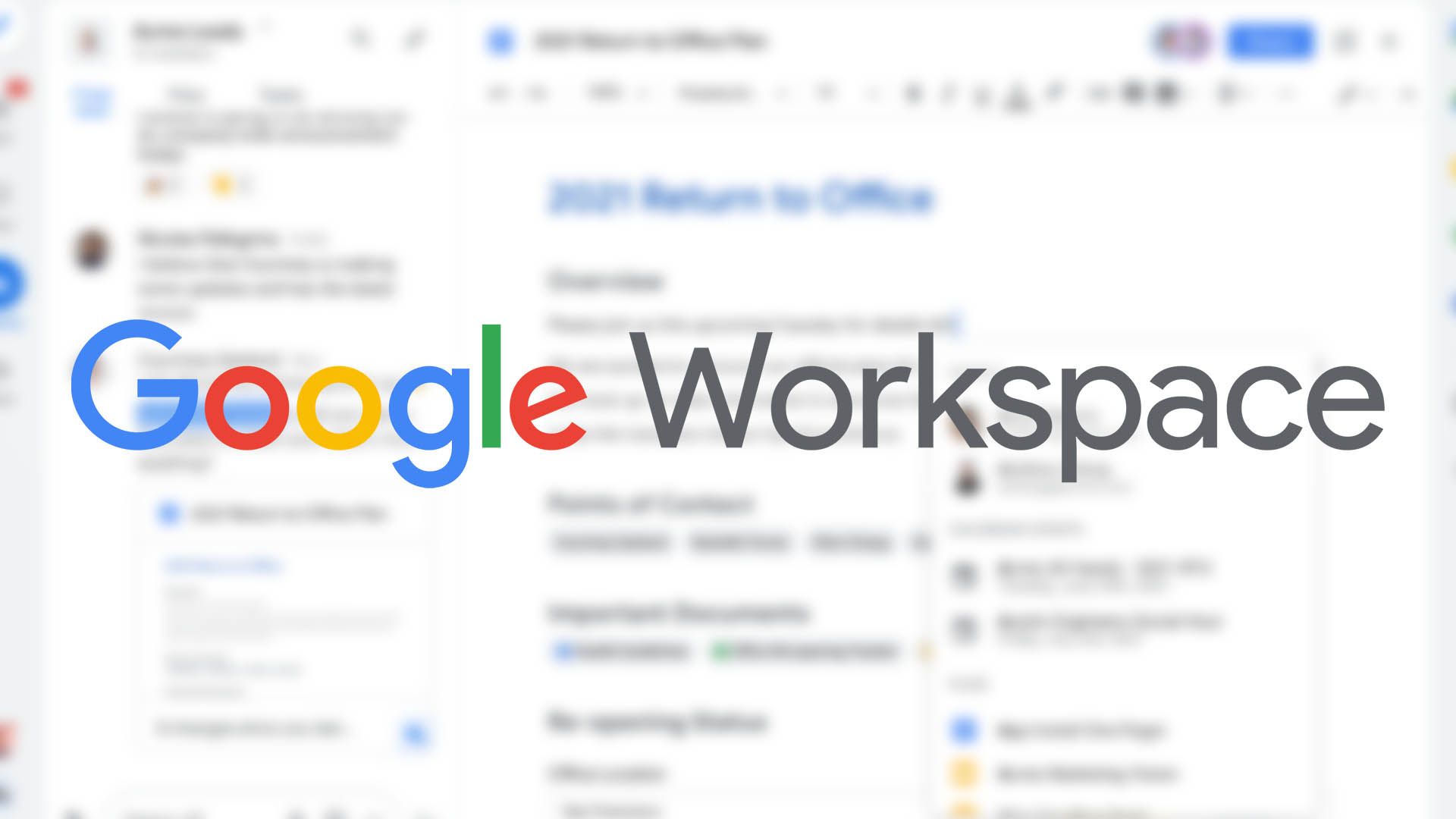
Google Workspace: Everything you need to know about Google's collaborative workplace platform
Google Workspace is essential for WFH and hybrid workWhich apps and services does Google Takeout support?
You might wonder what kind of data Google keeps on you. Sign in to your Google account and go to takeout.google.com to see the type of apps and services on the list. There are currently 54 sources of data you can choose to include in your export, including things like:
- Data from familiar products, such as Gmail, Drive files, Chrome, Photos, and YouTube.
- Data about your activity in Google Play Store, Play Books, Google Maps, Play Games Services, YouTube videos, and Play Movies & TV.
- Your account's access log activity.
- Google Classroom classes, posts, submissions, and registers.
- Your Blogger blogs, posts, pages, comments, videos, and your profile.
- Health data from services like Google Fit.
- Data related to your Google Business profile.
- Saved passes, virtual account numbers, and transaction history from Google Pay.
- Google Shopping order history, delivery method, addresses, and more.
- Your locations and settings from Location History.
- Your Google Cloud search history.
- Your Android device's configuration data.
- Data from your smart home devices like the Google Nest Hub.
Google Takeout makes it easy, but it can get complicated if you use Google Workspace. The admin may block you from exporting account data on an external device. Now that you know the reasons for creating an account backup, check our dedicated guide to using Google Takeout to migrate your data.
Things to consider when using Google Takeout
Google Takeout isn't perfect. You must keep several limitations in mind before starting the export process.
File export formats
Google Takeout gives you the option for multiple formats when selecting the Google services you want to export. For example, Google Docs can be exported as DOCX and PDF file types, common formats that are generally easy to open. Takeout doesn't support all the formats to which you can export if you download individual files.
Sometimes, these converted exports get messy (text formatting can be wrong), but Takeout mostly does a good job with files like Docs, Sheets, and Slides.
Gmail labels
If you rely on labels to organize your emails in Gmail, Google Takeout does not export them. Although each message's labels are saved in a special X-Gmail-Labels header in your downloaded files, no other mail clients currently recognize that header.
Collaboration permission
Permissions can be an issue with Takeout. The export tool doesn't maintain collaboration or sharing permission on files and folders. You may lose an important collaboration project document from years ago because it's owned by someone else and not by you. Be sure that any project Docs, Sheets, or other Google formats you do not own are saved individually.
File edits after exporting data
Recent changes may also not be included in your downloaded archive ZIP file formats. This happens when changes are made to your data between when you request a download and when the archive is created. This can include a file's sharing type or permissions in Drive, some comments in Google Docs, and photos or albums you added or deleted. So keep this in mind when exporting your archive file.
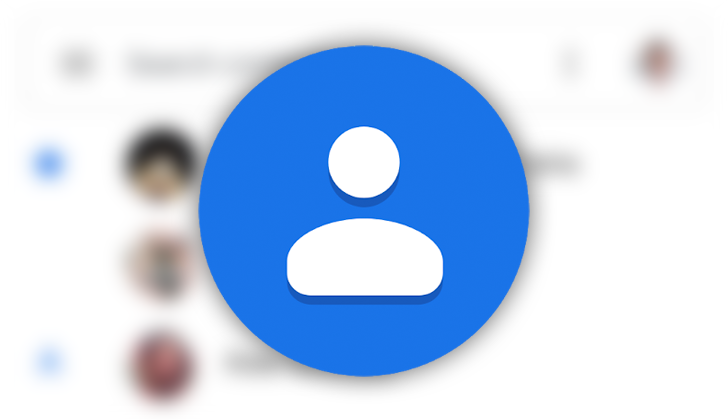
How to restore deleted contacts on Gmail and Google Workspace
Turn back the hands of time and undo any changes or accidental deletions to your contactsAdmin control in organizations
If you work for a company or other organization, the Google Workspace admin can control who can and cannot use Google Takeout. If the admin does not allow Takeout as a service, you don't see the option to export the service in the app menu. Admins can also choose the types of data you can and cannot export from Google apps. Those services don't appear as Takeout export options if they restrict data export permissions for specific services like Drive, Gmail, Calendar, or Contacts.
Limitations with several apps
Google Takeout doesn't support all the company's services. You can't migrate data from Google Forms, Google Sites, Google Analytics, and more. It doesn't support Google Meet links and tasks in Google Calendar. For some services like Google Analytics, you need to move your account data to another Google account.
Several ZIP files during large exports
When your export data is larger than 2GB, Google Takeout splits it into multiple ZIP files. For instance, you receive five ZIP files if you export 10GB of data using Google Takeout. You need to combine your relevant files, which can be inconvenient and time-consuming.
What happens when you submit a Takeout request?
After submitting a request to download your data, wait for the export process to complete. The estimated time depends on the amount of data you requested from Takeout. Meanwhile, you don't need to submit another request to create an export file. It may cause confusion with multiple ZIP files in your email.
Among all the Google services, you should receive your Google Calendars and Contacts quickly. It may take some time for your Mail, Drive, and Google Photos data to arrive in your account.
What is the Google Data Liberation Front?
Google Takeout is an official Google product developed by a team at Google called Google Data Liberation Front. It might sound like a hacking group or a rogue software engineering team that's fighting to free you from Google's clutches. Google believes that customers should be able to opt out of Google products while still being able to transfer their data to other products.
The Google Data Liberation Front engineering team was created at Google Chicago in 2009. Google Takeout was their first product, and after four years of development, it was released on June 28, 2011. The team's purpose is to ensure that data migration and portability are easy options if you or a company stop using their services.
However, the early version faced criticism from users. In the early days, Takeout didn't support two of the most-used services: Google Search history and Google Wallet. Takeout only allowed Google Buzz, Google Contacts, Streams, Profile, and Picasa albums. The team eventually added support for Google+, Google Voice, YouTube, and Blogger. The company reached a milestone when it added support for Gmail and Google Calendar.
Although it's becoming more common for other online platforms to offer export tools, some companies attempt to keep users by making it hard or impossible for them to get their data. Imagine exporting all your photos individually instead of downloading them all at once. The Data Liberation Front believes you should own your data, not the companies or products you use.
That's all pretty cool, right? Well, the Google Data Liberation Front took it even further. In 2017, they formed the Data Transfer Project, an open source initiative to improve data portability between multiple online platforms. Because of this project, you can transfer your photos and videos from Facebook to Google Photos. The project is partnered with Facebook, Microsoft, Twitter, and Apple.
Is Google Takeout safe to use?
Google Takeout is safe to use, provided you don't have a security risk on your end. Google looks to see if your actions seem risky. Google protects your account by delaying your actions or making them unavailable. It then sends you a warning email.
Take control of your data
Whether you want to export your data as a backup, migrate it to another account or service, or see what data Google has on you, Takeout makes the process seamless. If you want to wave goodbye to your Google account, export data using Takeout and then delete your Google account.
It's great that Google has been paving the way for data migration and data portability. You should own and have access to all your personal data. Thanks to the Google Data Liberation Front, that's becoming more of a possibility.

